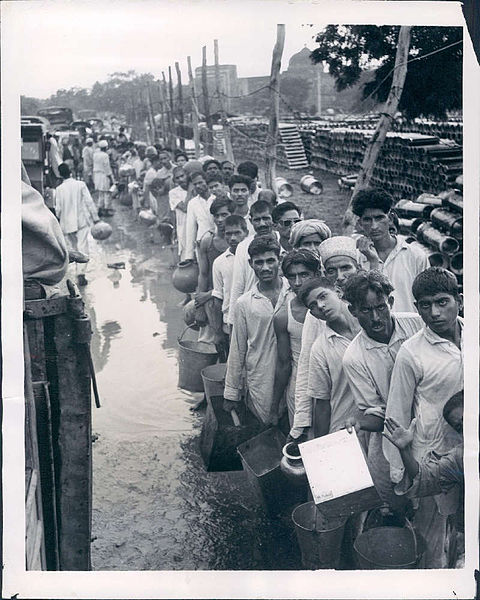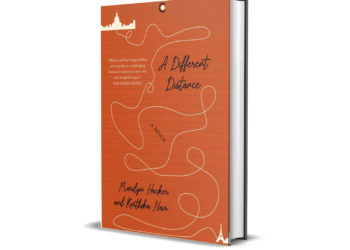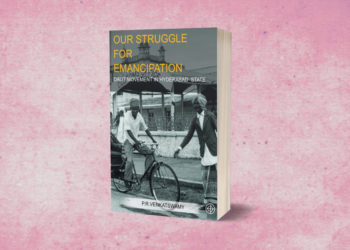
Vishwajyoti Ghosh’s graphic anthology This Side,That Side: Restorying Partition1 exemplifies a new take on the event and its aftermath, encompassing second and third generation memories and re-imaginings of 1947, from vantage points across the subcontinent. Indeed, the collaborative dimension that came to the fore with writers and artists from three countries (India, Pakistan and Bangladesh) participating is unique, as graphic narratives came to be co-written across borders. A kaleidoscope-like effect resulted, with multiple perspectives on 1947 and its aftermath being conjoined and juxtaposed, the medium of cyberspace allowed for Bangladeshi poet and Dhaka based professor of English Kaisar Haq’s “Border” to achieve a new avatar with graphic illustrations by Hemant Puri from India, for instance.2 In this poem, the motif of border-crossing desire is articulated afresh. The speaking subject begins as follows:
Let us say you dream of a woman
And because she isn’t anywhere around,
Imagine her across the border.3
A journey follows, in which the poem’s imaginary addressee travels by bus and ferry to a squalid frontier town, where he is taken by a one-legged rickshaw wallah to the best room in the best hotel.
But instead of crossing over you lie dreaming
Of the woman, and the border:
Perfect knife that slices through the earth,
Without the earth’s knowing,
Severs and joins at the same instant….4
As the borderline runs through modest households, an element of wry humour comes to the fore, as entire families eat under one flag and defecate under another, humming a different national tune (this was actually possible on account of the situation of the enclaves in the border region on the eastern side; only recently has this anomaly sought to be resolved through a treaty at the bi-national level, easing to an extent the dilemmas faced by enclave dwellers).
You lie down on the fateful line
Under a livid moon. You and your desire and the border are now one.
You raise the universal flag
of flaglessness. Amidst bird anthems
dawn explodes in a lusty salute.5
The relative fluidity and shifting contours of the eastern border becomes the basis for this poem, in which the desire for transcendence of the physical border eventually allows for the symbolic negation of hard-line definitions of the nation, as the poem’s addressee raises the universal flag of flaglessness (perhaps echoing Tagore’s criticism of nationalism). The liminal space of the border is negotiated at various levels. There is also the wistful aspiration, perhaps doomed to failure, of unity with the beloved, located in this case across the boundary. This becomes an extended metaphor for lost civilisational unity, a theme that recurs in Haq’s poetic oeuvre. Finally, though, it is the bird anthems that prevail, as dawn explodes in a lusty salute, signifying a transcendental perception, perhaps even transfiguration of selfhood at the site of the frontier, where self, desire and the border become one.
1. Vishwajyoti Ghosh, curator, This Side That Side: Restorying Partition (New Delhi: Yoda Press, 2013).
2. Also see Tarun K. Saint, ‘Revisioning and “Restorying” Partition: Modes of Testimony,’ in Partition: The Long Shadow, ed. Urvashi Butalia (New Delhi: Zubaan, 2015), 189–90.
3. Kaiser Haq and Hemant Puri, ‘Border’ in Ghosh, This Side, That Side, 44.
4. Ibid., 46–47.
5. Haq and Puri, ‘Border’, 49.




